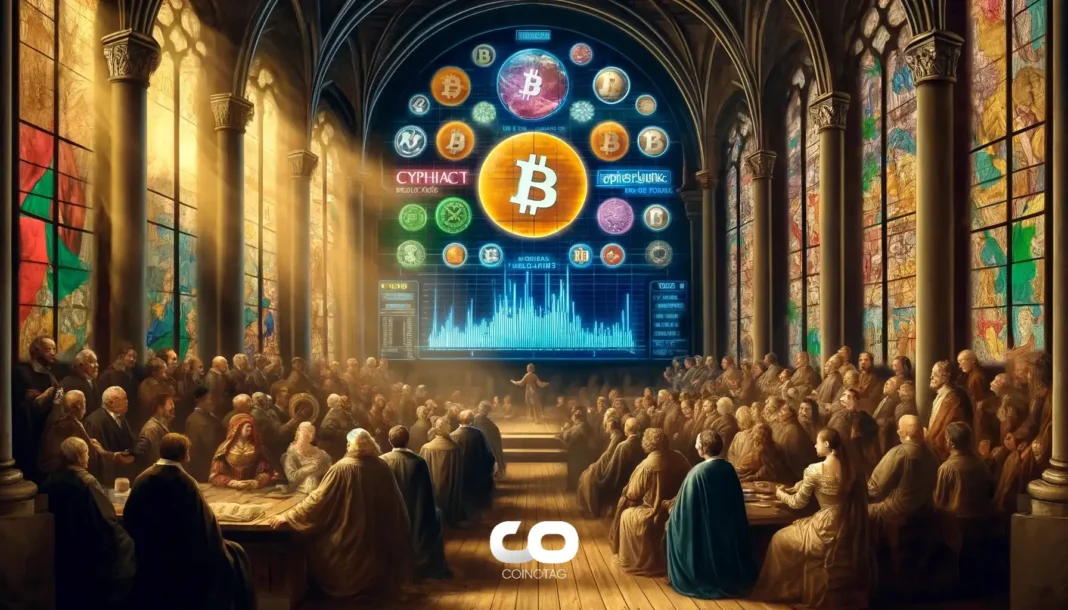-
The dramatic shift in the meme coin market reflects a broader trend in cryptocurrency as speculative enthusiasm wanes, leading to significant capital losses.
-
Market analysts suggest that the decline in meme coin values signals a possible reset for investor expectations surrounding these assets.
-
According to COO of WeRate, Quinten Francois, “The meme coin supercycle is the biggest bullshit I’ve ever heard,” questioning the viability of these investments.
The meme coin market has declined by 46%, raising concerns about investor confidence and the future of speculative crypto assets.
The Downfall of the Meme Coin Market: An Analytical Perspective
The meme coin sector, once a vibrant part of the broader cryptocurrency ecosystem, has witnessed an alarming drop in its total market capitalization, which fell from $137 billion to $74 billion in a matter of two months, as reported by CoinMarketCap. This drastic 46% decline is indicative of a fading speculative bubble and has reverted values to those last recorded in November 2024.

The decline in trading volumes, dropping by 29% during this period, underscores the challenge that meme coins currently face. As trading activity wanes, questions surrounding the legitimacy of the meme coin market gains traction among seasoned investors.
Market Liquidity and Investor Sentiment
Amid the broader bearish trends, liquidations across the crypto market have surged, totaling an estimated $10 billion, leading to widespread losses. Major coins in the meme category have been particularly affected. Notably, official Trump (TRUMP) and Pudgy Penguins (PENGU) faced significant declines, demonstrating that even previously highly valued tokens were not immune from the adverse effects of market sentiment erosion.
The severity of the recent sell-off was exacerbated by geopolitical tensions, particularly after President Donald Trump initiated tariffs impacting major trade partners. The resulting turmoil played a pivotal role in pushing the crypto market into perilous territory, contributing to the historic liquidation event, which has left many investors questioning their strategies.
Investor Reactions and Future Outlook
Despite the bleak landscape, some analysts maintain a glimmer of hope for a resurgence in meme coins. Investor sentiment diverges, as evidenced by crypto analyst Kale Abe’s pessimistic outlook post-liquidation: “After $10 billion in liquidations, NO ONE is gonna buy new meme coin launches,” suggesting a potential stalling in new investments within this space.
Conversely, some investors, such as Murad, remain optimistic, claiming, “Buckle up, the best year of your life is coming,” despite suffering a 26% decline in their portfolio during the same downturn. This showcases the divided perspectives within the community regarding the future viability of meme coins.

Recuperation Following Diplomatic Developments
The potential for recovery materialized with a recent diplomatic breakthrough between the Mexican and Canadian leadership, alongside President Trump’s administration. Their agreement to de-escalate trade tensions sparked a rally across the crypto market, allowing Bitcoin to reclaim levels above $100,000. The resurgence of interest in meme coins was also evidenced, though TRUMP coin continued to lag amidst the recovery.
According to CoinGecko, the total market cap of meme coins edged up by over 4% in the aftermath of the news, with notable gains by coins such as Floki (FLOKI), Pengu, and Dogecoin (DOGE), which recorded double-digit increases. This illustrates the volatile yet dynamic nature of this segment where even amid uncertainty, opportunities may still yield favorable returns.
Conclusion
The landscape for meme coins remains precarious, marked by skepticism and substantial losses. However, with recent diplomatic resolutions fostering market optimism, there may be room for cautious recovery. Investors must navigate carefully, weighing past performances against a backdrop of evolving market conditions. The future of meme coins may very well depend on a shift towards more transparent and sustainable growth strategies.







